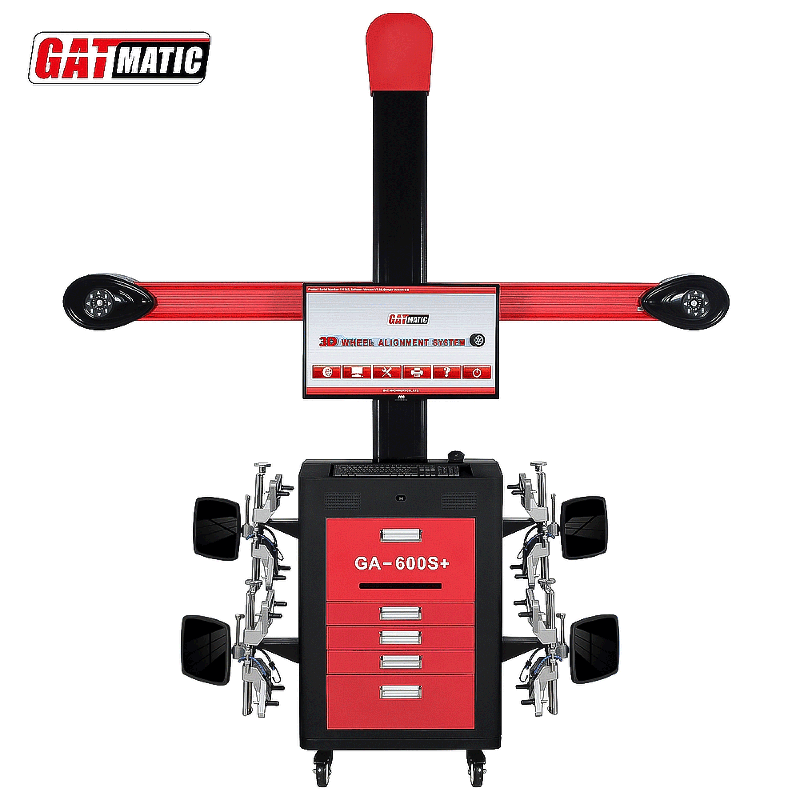What are the signs that my vehicle needs a four-wheel alignment?
I. Introduction
Proper wheel alignment is crucial for the safety, performance, and longevity of your vehicle. Misalignment can occur due to various factors, including hitting potholes, curbs, or being involved in accidents. Recognizing the signs that indicate your vehicle needs a four-wheel alignment can help you maintain optimal driving conditions and prevent further damage to your tires and suspension system.
II. Common Signs of Misalignment
1. Vehicle Pulls to One Side
One of the most noticeable signs of misalignment is when your vehicle pulls to one side while driving on a straight road. If you find yourself constantly correcting the steering wheel to keep your vehicle on course, it’s a clear indicator that something is off. This not only makes driving more challenging but can also be dangerous, as it increases the risk of losing control.
2. Uneven Tire Wear
Regular tire inspections can reveal much about your vehicle’s alignment. If you notice that the tread on your tires is wearing unevenly—such as more wear on one side than the other—it’s a strong sign that your wheels are misaligned. Addressing this issue promptly can save you money on premature tire replacements and enhance your vehicle’s overall performance.
3. Crooked Steering Wheel
When driving straight, your steering wheel should be centered and level. If you observe that it is tilted to one side, this misalignment could indicate that your wheels are not properly aligned. A crooked steering wheel can lead to poor handling and increased wear on your tires.
4. Vibrations or Shaking
Experiencing vibrations or shaking in the steering wheel or throughout the vehicle while driving can be another sign of misalignment. This symptom may also indicate other issues, such as tire balance problems or suspension issues, but it’s essential to have it checked out as soon as possible to ensure safe driving conditions.
5. Squealing Tires
If you hear squealing noises from your tires when making turns, it may be a sign of misalignment. This sound often results from excessive friction between the tires and the road due to improper angles. Ignoring this noise could lead to more severe tire damage over time.
1. II. Additional Indicators
2. Excessive Steering Correction
If you find yourself making constant adjustments to keep your vehicle driving straight, this excessive steering correction is a telltale sign of misalignment. It can lead to driver fatigue and increased risk of accidents.
3. Loose or Sloppy Steering Feel
A loose or sloppy feel in the steering wheel can indicate underlying issues with alignment or suspension components. This lack of responsiveness can compromise your control over the vehicle, making it essential to address promptly.
4. Changes in Vehicle Handling
Misalignment can affect how your vehicle handles during braking and turning maneuvers. If you notice significant changes in how your car responds—such as increased stopping distance or difficulty turning—it’s time to have an alignment check.
5. When to Seek Professional Help
It’s generally recommended to have your alignment checked at least once a year or whenever you notice any of these symptoms. Additionally, if you’ve recently hit a significant bump or have been involved in an accident, it’s wise to have a professional inspect your alignment. Addressing alignment issues early can prevent further damage to your tires and suspension system.
III. Types of 2Alignments
1. Two-Wheel Alignment vs. Four-Wheel Alignment
Understanding the difference between two-wheel and four-wheel alignments is essential for proper maintenance. A two-wheel alignment typically applies to vehicles with rear-wheel drive, adjusting only the front wheels. In contrast, a four-wheel alignment is necessary for all-wheel-drive vehicles or those with independent rear suspension systems, ensuring all wheels are aligned correctly for optimal performance.
2. Thrust Alignment
Thrust alignment is another type of service that focuses on aligning the rear wheels with the front wheels’ direction. This method is particularly useful for vehicles with solid rear axles and ensures that all wheels work together effectively.
Conclusion
Monitoring for signs of misalignment is vital for maintaining safe driving conditions and prolonging the life of your tires and suspension system. If you experience any symptoms mentioned above, it’s crucial to consult with a professional mechanic promptly. By addressing these issues early, you can ensure a smoother ride and enhance the overall performance of your vehicle.
FAQs
1. What is a four-wheel alignment?
A four-wheel alignment is a process that adjusts the angles of all four wheels to ensure they are aligned according to the vehicle manufacturer’s specifications. This includes adjusting the camber, caster, and toe angles on both the front and rear wheels, which helps improve handling, tire wear, and overall vehicle performance
2. How can I tell if my vehicle needs a four-wheel alignment?
Common signs of misalignment include:
- The vehicle pulls to one side while driving.
- Uneven or rapid tire wear.
- A crooked steering wheel when driving straight.
- Vibrations or shaking in the steering wheel or vehicle.
- Squealing noises from tires during turns
3. Do all vehicles require a four-wheel alignment?
Most modern vehicles, including cars, small SUVs, and crossovers, require a four-wheel alignment due to their independent rear suspensions or all-wheel-drive systems. However, some older vehicles with solid rear axles may only need a two-wheel alignment.
4. How often should I get a wheel alignment?
It is generally recommended to have your wheel alignment checked every one to two years or whenever you notice symptoms of misalignment. Additionally, alignments should be performed when new tires are installed to ensure even wear
.5. What factors can affect wheel alignment?
Several factors can throw off your vehicle’s alignment, including:
- Hitting potholes or curbs.
- Accidents or collisions.
- General wear and tear on suspension components as the vehicle ages
6. Will misalignment affect my fuel efficiency?
Yes, misaligned wheels can lead to increased rolling resistance, which may decrease fuel efficiency. Properly aligned wheels reduce friction and help improve gas mileage
7. How much does a four-wheel alignment cost?
The cost of a four-wheel alignment can vary widely based on factors such as your vehicle type, location, and the shop you choose. Prices typically range from $99 to $350
Describe Your Needs In Detail!
We will carefully evaluate your needs and give professional solutions.



